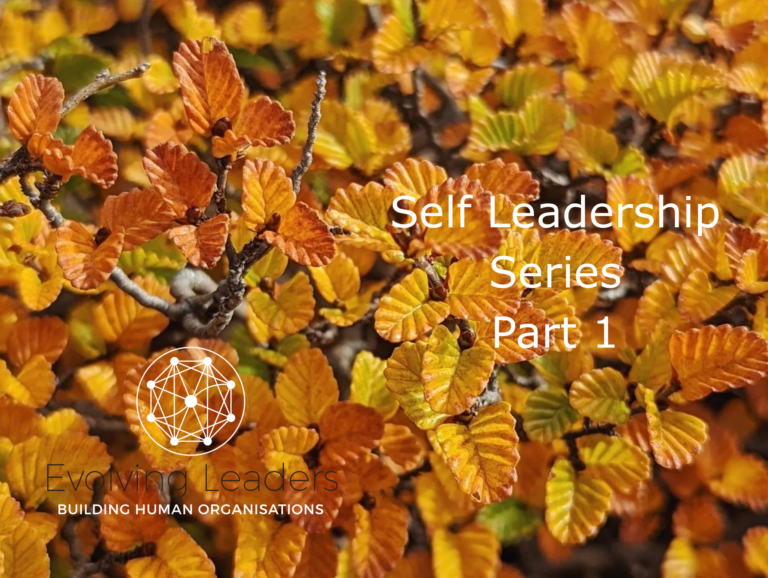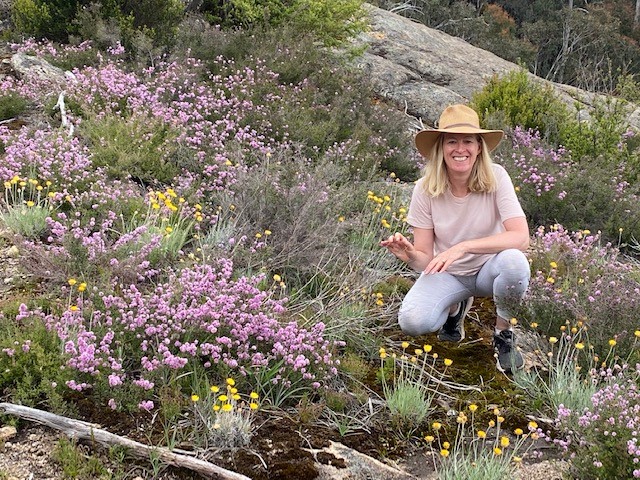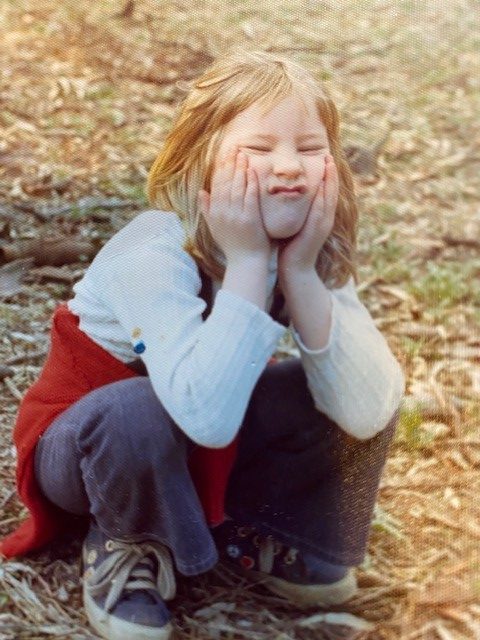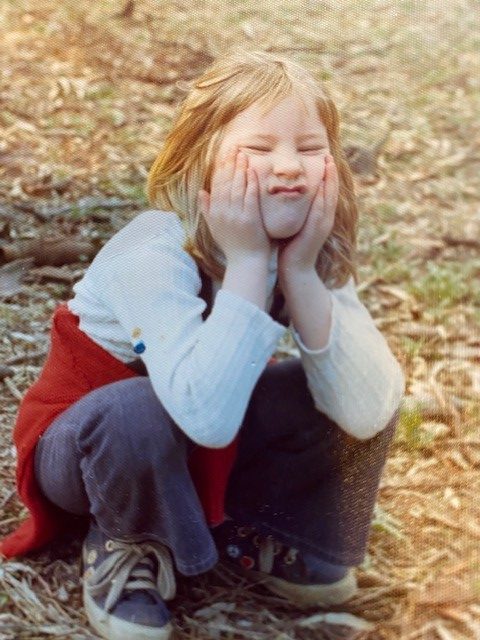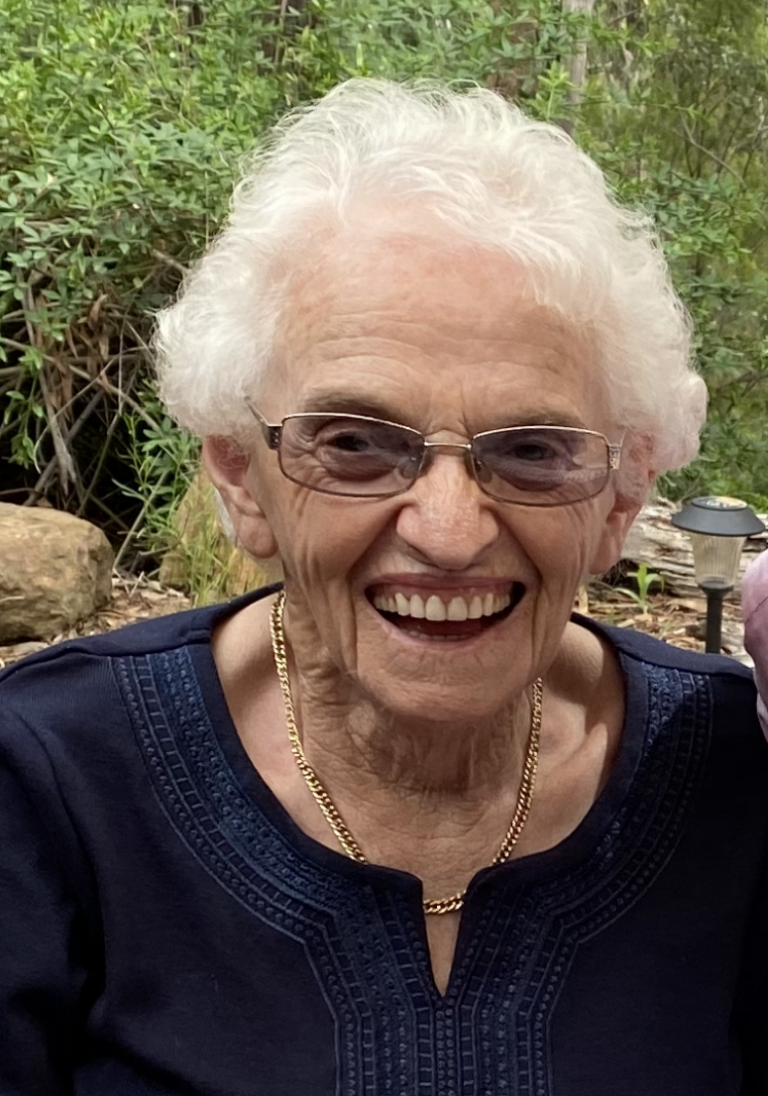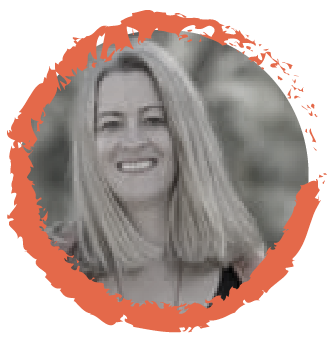Self Leadership Series – Part 1 #1 Something needs to change
This post explores the idea that when we find ourselves in a ‘stuck’ place that only we can truly be our ‘own rescue’. It also highlights the importance of leaders prioritising and focusing on their own development is the catalyst for change in the broader ‘system’ (team, organisation).
Fourteen years ago (age 36) my external world looked bright, but my internal world was dark and empty. I was unable to see the beauty of the flowers in the garden. I was unable to feel the joy emanating from my three beautiful daughters. I was unable to experience and connect with the magic of life that was all around me. I was a prisoner to my own thoughts. Alive but not living. Surviving but not flourishing. I was so consumed by this experience at the time that I could not really see what was happening and nor did the people that loved me in my life have any idea at the depth of the hollowness I had found myself in. I did know one thing however. I knew that something needed to change.
I realised no-one else could make that change. I had a choice to make and I knew that I needed to be my own rescue. I made a promise to myself to stop focussing on the ‘shoulds’ and the barrage of mental chatter and to follow my heart ( I didn’t even know what that meant at the time). This was a turning point and the start of a commitment to move a little more towards myself.
In the years that followed, I sought out new experiences and people that experienced the world in ways different to what I knew ( & how I had been socialised), I learned to connect with and to express and honour how I was feeling; I got better at regulating my emotions and learned how to become the observer of my thoughts; I practiced meditation and trained as a yoga nidra teacher; I surrounded myself with friends, colleagues and therapists that could really ‘see’ me and support me when I couldn’t do that for myself.
I became a student of art therapy which was perhaps the most transformative part of my evolution to date. It was through the non-verbal language of symbols and exploring and experimenting with art process that I was able to connect with and come into relationship with my own inner landscape.
I finally had accessed some of the ‘felt’ or ‘embodied’ experience of what people meant when they talked about this idea of ‘leading from the inside out’.
Through the mirror that other people held for me ( we all do that for each other), I started to see and begin to own who I really was and to claim the parts of me that I had never known and certainly not owned, celebrated nor leveraged in my life.
Through this time, I continued to work as a leadership, change and culture professional and in 2014, I began my current leadership and culture practice – Evolving Leaders –with the purpose of evolving the consciousness of leaders to make the world a better place.
What I have witnessed repeatedly through my organisational development work is that unless leaders prioritise and focus on their own evolution and growth then change in the system (team, organisation,) will be limited.
The simple fact is that organisations don’t change, people do.
The same applies in life whether we are in a formal leadership ‘role’ or not, doesn’t matter. What does matter is, that when we consciously focus energy and effort towards our own evolution and growth we begin to unpeel the layers of our socialised selves. This is the pathway to getting a little closer to who we truly are. When we choose this path, we ignite change not only in ourselves, but become a source of inspiration for those around us – our families, teams, communities and organisations.
The second post in this series will look some of What I’ve discovered about self-leadership.
This post is an excerpt from my draft book Activating Self Leadership.
Photo Credit: Bree Hughes 2022 (Taken on a trip to Mt Field National Park with Bree to see the Turning of the Fagus)
As this year comes to a close, I wanted to say a massive thank you to you – the wonderful leaders I have had the privilege of supporting in 2021. I especially want to extend that gratitude to the dedicated health professionals and other leaders in our community at the forefront of the Covid response that we thought might have been a sprint but is turning out to be a marathon.
There have been so many acts of extraordinary leadership – often at great personal sacrifice – and to these people I say thank-you.
I took a pre-xmas break and spent much of that amidst the magical wildflowers on Taungurang Country – Mount Buffalo in the Victorian Alps. It was a reminder to me of the regeneration and healing that happens when we spend quiet time in nature – something that has been known and practiced by Aboriginal people for thousands of years.
“My people are not threatened by silence, we are completely at home in it. We have lived for thousands of years with Nature’s quietness’’ – Miriam Rose Ungunmerr Baumann 2021 – Renowned Aboriginal artist, Educator and Senior Australian of the year 2021
If we can create habits and practices to spend time in nature and learn to be still and silent in its presence, then we unearth our own special relationship and begin to understand viscerally just how interconnected we are.
When I spend time in nature, I find the clutter and confusion falls away, my busy mind can release and my body relaxes. If I am sharing this experience with another, I find the simple act of walking shifts any energy that is out of alignment in the relationship and opens up greater levels of connection. New insights appear often in a most unexpected way. I return energised, clear and focused and ready to be present with whatever comes next. It is my happy place 😊 The place where I feel most connected to myself and where I feel a powerful connection to something greater.
Amongst the uncertainty, shifting goal posts and intense noise and distraction that has become our new norm, I believe that spending time being present in nature is perhaps the greatest antidote we have available to us.
As you embark upon this festive season, I hope that you too can spend some quiet time in nature – refilling your own cup and honouring mother nature as the great teacher and healer that she is.
Sending love and light for the festive season wherever you are.
See you in 2022.
Nicola x
PS You can read Miriam Rose’s full article here🙁 and it is well worth taking the time to do that)
As we continue to navigate ongoing uncertainty and a need to find a way to live more fluidly in many aspects of life, I wanted to re-share this post that I wrote in August 2020 (Lockdown 2.0 – as it has now come to be known amongst we Melbourne folk).
This post is designed to get you thinking about how you are being with yourself and each. It invites us to consider the benefits of:
– being more real with ourselves and more vulnerable in our sharing,
– listening without judgement and without need to ‘fix’ the other person; and
– safely expressing how we are feeling to help stuck energy move through us so that we can function more effectively.
Much of my current work is focused on supporting leaders to activate greater levels of self-leadership.To begin to do that more effectively we need to develop our capacity to observe our thoughts and feelings, learn to listen without judgement or a ‘need’ to fix anything, and to find health ways to express. I see these as ‘being a human foundational 101 skills’ that mostly we must learn these skills as adults as we were neither taught ‘how’ nor had the benefit of having this way of being modelled to us. Developing these skills are essential to activating greater levels of self-leadership and the myriad of benefits that come with that for both life and leadership.
During this week – a week in which millions of people across Vic, NSW and SA are currently in lockdown, there were over 1600 views of this post on Linked-in. I don’t think this is a coincidence. Perhaps, with the pressure lifted to new levels for many people, the need to know how to navigate our emotional landscape so that we can take care of our mental health and function effectively amidst the constantly shifting landscape – is what we are all needing more of right now?
Enjoy the read and please reach out and let me know if it’s helpful for you.
With love,
Nicola x
PS If you are in the Sydney lockdown – sending extra love and support at this really difficult time.
There is a lot to navigate right now isn’t there? How are you holding up?
When Dan Andrews announced extensions of stage 4 restrictions for Melbourne Lockdown 2.0 on Father’s Day 2020, the news wasn’t unexpected. In some ways I let it wash over me that day. That night, however, I tossed and turned and did not sleep well.
Monday came around again and as I was looking down the barrel of another week of what felt at the time like Groundhog Day, I awoke feeling overwhelmed and not knowing how I or anyone else was going to endure several more weeks of lockdown. I felt heavy and stuck and I was unable, in that moment, to focus on anything other than doom and gloom.
To compound how I was feeling, I started to feel guilty about feeling that way. Given all that I have to be grateful for in my life I should be able to just think positive thoughts and get on with it.
How often do we give that advice to ourselves and offer or give that advice to others? It has its place but sometimes it’s not helpful and can even be harmful.
Not surprisingly this harsh inner-critic compounded how I was feeling. Luckily for me, with my husband working from home we had some extra time together over breakfast (one of the many gifts that isolation has given us). He was able to be present with me and just listened as I explained to him how I was feeling in that moment. I didn’t hold back and left no stone unturned. He didn’t try and ‘fix’ anything. He was present and he listened. I cried. He passed the tissues and he listened.
After the 10 minutes it took for me to do the offload, he said, ‘I am sorry that you are feeling that way’ and gave me a big hug.
You know what happened then? The veil of heaviness that had surrounded me began to lift. I felt so much lighter. I mustered up the energy for a walk and reflected on that little bit of ‘magic’ that had just transpired. I felt so much better in myself. I was able to refocus on my day and get on with what I had to get done.
I share this story as a reminder of how important it is that we acknowledge the full spectrum of how we are feeling and find a healthy way to express that. Especially at this time, but this is equally important in our day-to-day interactions, life and leadership.
We need to get rid of the story of judging feelings as being ‘good’ and ‘bad’ and learn to welcome and make space for them all. We need to re-frame this idea that we should always focus on the positive, especially when it is at the expense of putting a lid on our so-called ‘negative’ emotions.
I am not suggesting for a moment that we should wallow in self-pity and stay there. What I am suggesting is that if we simply try and put a lid on the things we don’t want to feel then they will stay stuck somewhere in our bodies, wreaking potential havoc there. And they will get a stronger grip on us and keep us stuck there for even longer.
If we can, on the other hand, give these ‘feelings’ what they need – which is often simply to be acknowledged – they can then move through us and we can regain clarity, calm and the perspective that we need to be able to move forward.
You can read the full poem here.
My questions to you:
Are you making space to express all aspects of how you are feeling?
Is there anything you can do differently in supporting others to help them make space for expressing all of how they are feeling?
Please take care. Look after your emotional landscape and of course at any stage you feel any emotion feels too intense for then please get professional support. https://www.ruok.org.au/findhelp
This post shares a personal story and suggests that every human being on the planet right now, in some shape or form, is facing into their own ‘growth edge’. It invites the reader to reflect on what they are noticing in themselves and others in terms of this personal learning and highlights that perhaps the luckiest people right now have leaders and organisations that are providing development and wellbeing support for their people.
Meet Elaine. She is my delightful 84-year-old mother-in law. Elaine left school at age 15 to help with home duties on the family farm and continued in that role all through motherhood and grandmother-hood.
In her lifetime, she has baked tonnes of lemon slice and the arguably the best chocolate cake ever. When she isn’t baking, she pours all her energy and focus into supporting her community and showering us – the family – with her love.
Throughout her lifetime, Elaine has felt no desire for, nor any reason to, use a computer or a smartphone. And so, in March 2020, as the world felt like it was closing in on all of us, we realised that that Elaine would soon be in total isolation. Without even the stilted connectedness the internet offers the rest of us, she would have very limited contact with her her family and friends, and we were concerned about the flow-on impact this would have on her overall wellbeing.
So, without further thought, we purchased her an iPad. In a curious way, one of the first questions she asked was, ‘Why is the keyboard not in alphabetical order?’ She had never used any sort of keyboard in her life, let alone an email address. How much we take for granted! This was completely uncharted territory for her.
The rest is history.
True to form, with her enthusiastic approach to a new challenge, she was up-and-running in no time. The pure delight we witnessed when Elaine had her whole family (across many geographical locations) in front of her on the first Facetime call is a precious moment that will stay in my heart forever.
If you had said to me six months ago that, in the year 2020, Elaine would be making Facetime calls, ordering her groceries and doing her banking online, I would have broken out in laughter!
But she was soon doing all of that. We are so proud of her.
Elaine’s story got me thinking about what the disruption of this year has meant to all of us in terms of the learning we have been somewhat forced to do or had to do in many ways. What became clear to me is that every human being on the planet right now has had to confront their own fear at some level and learn something new, or make some change that they would not have made without the pandemic.
No one is exempt. It has been, and continues to be, a true ‘growth edge’ experience for us all. (Read more about growth edge here)
Do you agree? Where have you noticed this happening?
What are you being asked to or forced to change at this time?
What is your personal growth edge right now?
Some examples from my own ‘growth edge backyard’ are:
- quickly getting up to speed and proficient at creating connection and engagement online so as to be able to effectively deliver team development via an online platform. Like many, I still really don’t like facilitating groups on Microsoft Teams, but at least I know how to do it.
- taming my voice in our family to allow each person an equal say in shaping the healthy boundaries needed for life in isolation in a household of five people (that is, learning to listen better and not assuming I always have the best answer)
- establishing a healthy and productive work rhythm by creating greater structure around my allocated working hours, which in my case means 90 minute cycles then taking a break (here is a great article on this topic).
Most clients that I am currently working with are struggling with many aspects of work and life – juggling home schooling, too many hours on Zoom and experiencing other financial and social pressures. It’s the norm rather than the exception right now.
What is being demanded of people by this pandemic in terms of growing and changing for many feels heavy and hard. I am also noticing, however, that the luckiest people during this time work in organisations and with leaders that recognise the need for, and are investing in, the wellbeing and development of their people. It is from this support base, that people can begin to make sense of themselves and their own experiences and begin to see some reward and celebration of their efforts on the other side.
The benefits flow on, as when this growth edge can be applied within a broader team context, it is even more powerful. As individuals grow and change and are able to be more vulnerable and courageous with themselves – as 84-year-old Elaine has demonstrated so well, and when they can do this with their teams as well, then team culture can grow in ways that are good for all.
Could you or your team do with support right now? Please get in touch to book your team development – delivered remotely of course.
The previous post outlined why reflective practice is a leadership super power and surfaced some of the richness that reflection brings. This post explores three of the barriers to creating space and time to reflect and provides you with a structure to get started.
My previous blog post explored why reflective practice is a leadership super power and surfaced some of the benefits and insights that reflection helps us with. In this post I want to explore three of the internal barriers to getting started and provide you with a framework and some great questions to inspire you to do it anyway!
The reality is that reflective practice is something most people, including most leaders, have never done. We live in a society, and certainly in workplaces, in which ‘doing’ and ‘tasks’ are what are valued and creating space to reflect and learn is far from the reality.
Three main barriers to reflective practice
There are three main barriers that get in the way of us creating space and therefore creating the environment to reflect:
- We don’t schedule it/plan for it/turn up for it
- We don’t value it – ‘Why would I bother doing that?’
- We think that what it might show up for us feels too daunting and scary – so it is safer/better not to do it at all
Let’s explore these:
- We don’t schedule it/plan for it/turn up for it
In my earlier ‘Five keys to creating conscious change and restoring wellbeing’ post, I introduced the 5S leadership self-care model. The first S in this model talks about making ‘space’ – carving out space – which means scheduling it into your calendar and creating the conditions to support that schedule (such as finding the best environment for you to be able to bring your full focus to the intended activity: reflection).
Even if you do schedule time for reflective practice, it can be all too easily get ‘bumped’ for something more ‘important’ that appears on your to-do list. The biggest tip I can offer here is schedule it and show up fully for yourself – no excuses. Treat it as you would a meeting with your boss or a client.
2. We don’t value it – ‘Why would I bother doing that?
If we don’t understand the benefits of a new practice, we won’t value it. My hope is that if this is new for you, that some of what has been explored in the previous post will help you to at least feel tempted to give it a go. Perhaps ask around and connect with another leader who you know does use reflective practice and ask them personally about why they do it and how they go about doing it.
3. We think that what it might show up for us feels too daunting and scary – so it is safer/better not to do it at all
In a crazy-busy life, we often have a backlog of things we need to process and make sense of. If this is the case for you, then carving out space can feel quite daunting and even scary. Why?
Because sometimes we keep ourselves so busy because that means we don’t have to look at and face up to what is really happening and true for us. If we don’t look towards this stuff and keep running from it, then we don’t need to have that honest conversation with ourselves or another, and we won’t need to make a choice or decision that may mean change. Right?
This can be a sensible and even worthy strategy in the short term, depending on life circumstances. However, in the medium to longer term it will catch up with us. If we keep ‘shying away’ from what we know is true for us and pretending that everything is okay – if we don’t start to face up to what is really true for us – we can begin to compromise the very core of our being. That doesn’t serve you, the situation or anybody else.
Can you relate to any of the above? What is standing in the way of you reflecting?
Getting started with reflective practice
Here is a framework that might help to get you started:
- Schedule it
- Show up for it
- Structure it
Option 1
- Recall and review: identify a recent situation/event/conversation/feeling/trigger that you want to explore. Capture the key points you recall, replay the conversation in your head and/or begin the process of a written journal.
- What are the key learnings?
- What did you notice?
- What did you say?
- How did you feel?
- What were you most proud of?
- What were you not so proud of?
- What do you now understand about yourself?
- What do you now understand about the situation?
- Set direction with what you now understand about yourself. The situation, the other person, etc. What will you do differently next time? What is your intention and course of action from here?
Option 2
Thinking about the past week or month, ask yourself the following questions:
- What am I most proud of?
- When have I felt triggered by a particular situation or event?
- What made me feel that way?
- What can I observe/learn about myself in this situation?
- What action do I need to take from here (if any?)
Leaders who thrive are those who care enough about themselves and those they lead to do this – to look in their own backyard and do their own self-work.
Still feeling too tough? You don’t have to go it alone. A good way to start might be to get yourself a leadership coach who can ‘hold the space’ for you so you can begin a gentle journey inwards.
I also recommend the host of resources referred to in my ‘Five keys to creating conscious change and restoring wellbeing’ post. Perhaps you simply feel ready to grab a notebook and get started?
To reiterate the closing words in my last post:
One of the greatest leadership/life challenges is knowing who we are and what matters to us at our core AND not letting the busyness of life and a multitude of external distractions pull us away from that.
One thing is guaranteed: unless you deliberately and regularly carve out space to engage in reflective practice and take a balcony perspective, life will pull you off course from your centre – from who you are and what matters to you.
If you do build a reflective practice into your rhythm in life, the conversations might be tougher but the outcomes will also be richer.
The choice is yours. What do you choose?
The previous post involved a personal story that highlighted the shifts that can happen when we make space to reflect. This post builds on that example and explores other benefits of reflection, why the reflective practice is a leadership super power and how to build it as a practice into your own way of being.
Leaders whom I work with in a coaching capacity often comment that during our time together they experience a sense of space and an absence of judgement. They appreciate the chance to slow down and reflect. It’s from this place that clarity and insight become available resulting in better decisions, choices and outcomes.
To be truly conscious, awake and aware of both your inner landscape and the outer terrain of work and life requires a paradigm shift for leaders about the importance of something I believe is a leadership ‘super- power’: reflective practice.
I wish I could find a better term for it than ‘reflective practice’ – I know it sounds more like something that nuns would prescribe as a punishment at boarding school than a leadership super power. (Perhaps you can suggest a better name?)
Nevertheless, it’s the sentiment rather than the name that is important.
Reflective practice needs to become something that happens not just in a formal setting such as coaching. Rather, it needs to extend to become an integrated part of your daily, weekly, monthly and yearly modus operandi as a leader.
What is reflective practice?
Joseph A Raelin, in his article‘”I don’t have time to think” versus the art of reflective practice’,defines reflection as:
‘the practice of periodically stepping back to ponder the meaning of what has recently transpired to ourselves and to others in our immediate environment. It illuminates what the self and others have experienced, providing a basis for future action.’
How does reflective practice help?
As highlighted in the personal story in my previous post, often when we are in the middle of a situation, particularly a stressful one, we cannot maintain the perspective we need to be able to see the situation holistically. It’s only when we create the space and time to reflect that we are able to ‘step off the dance floor’ and get a broader ‘balcony’ perspective of what’s going on. The outcome? Insight, insight, insight. Insight about how you showed up effectively (or not so effectively). A greater capacity to see the perspective of others. The opportunity to identify what ‘triggers’ you and to explore why. The chance to bring light to a problem that may have felt impossible to solve, creating new options and a clear pathway forward.
Why does this matter? Because the consequence of not making time to reflect is quite possibly collateral damage to projects and relationships; damage that is inevitable when we operate completely in action and reaction.
Perhaps you can recall a specific example of where this may have happened to you? Or the opposite: can you think of a time when you did create the time and space to reflect on a challenge and experienced a positive outcome as a result?
What are the benefits?
Some of the benefits of reflective practice are:
- Seeing below the surface to reveal what really is happening. Reflective practice can make the invisible visible. For instance, it can bring to the surface a personal value that might be important to yourself or others and that might explain why a conversation/ outcome/ situation went in a particular direction.
- Restoring wellbeing:
- A simple shift from ‘doing’ constantly to taking space out to ‘be’ helps our nervous system to restore balance (Blog: Mastering thinking and doing AND feeling and being).
- A dose each of compassion and self-compassion will go a long way towards resolving something that doesn’t feel so good so that you can let it move through you (Blog: Are you being a good friend to yourself?)
- Reflective practice opens the opportunity for gratitude. Research has shown that the practice of gratitude has many positive benefits (https://positivepsychologyprogram.com/benefits-gratitude-research-questions/ )
- Connecting the dots. With reflective practice we may begin to see connections between behaviours, actions or situations that previously didn’t appear to be connected. For example, when I learned that one of the personal values of a colleague was ‘control’, I started to understand some of the ways she was behaving in our collaboration. I had previously I felt that her behaviour was out of character and not really serving our partnership. This provided an opportunity to open up the conversation. Connecting the dots can also happen within our own internal landscape. To share a personal example: understanding that the reason I was overprotective of my daughter stemmed from an experience in my past in which I didn’t feel safe.
- Insight, insight, insight. Reflective practice ignites learning about ourselves and the people and world around us. This is essential if we want to live and lead consciously and learn and grow.
- Strengthening connections: with ourselves – what matters to us at our core – and in our relationships with other people.
- Shifting you out of a reactive mindset to allow constructive ‘above the line’ responses. Reflective practice will make you less likely to react and add fuel to what might already be a difficult situation. You are more likely to ‘discharge the heat’ and approach the next conversation in a more open and constructive manner. ( If this concept is new to you – check out this 3 minute u-tube – it’s a concept well worth knowing)
One of the greatest leadership/life challenges is knowing who we are and what matters to us at our core while also not letting the busyness of life and a multitude of external distractions pull us away from that.
One thing is guaranteed: unless you deliberately and regularly carve out space to engage in reflective practice and take a balcony perspective, life will pull you off course from your centre – from who you are and what matters to you.
On the other hand, if you do build reflective practice into the rhythm of your life, the conversations might be tougher but the outcomes will be so much richer.
In my next post, I outline one of the big road blocks that many people experience in getting started with reflection and provide some tips and great questions to get you started.


